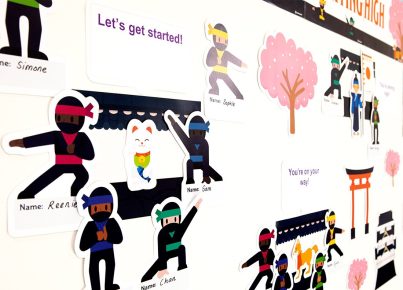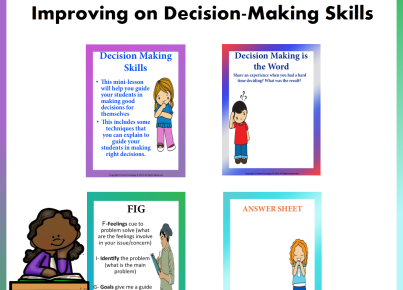1. T.H.I.N.K. Acrostic: Have students come up with an acrostic for the word “think,” using phrases or words related to thoughtful communication.
2. Role-Play Conversations: Divide students into groups and give them different scenarios where they’ll need to practice mindful speaking.
3. Discussion Circles: Organize students into small groups where they’re encouraged to listen carefully and think before speaking on a given topic.
4. Pause Before Speaking: Teach students to take a moment to breathe and reflect before responding, emphasizing the importance of mindfulness in communication.
5. Daily Affirmations: Encourage students to share a positive affirmation with a classmate each morning, promoting healthy and supportive communication.
6. T.H.I.N.K. Journaling: Have students maintain a journal where they record instances of mindful communication or moments when they could have applied the T.H.I.N.K. method.
7. Conflict Resolution Exercise: Use role-play scenarios involving conflicts and teach students how to effectively resolve them using the T.H.I.N.K. principles.
8. Empathy Building: Guide students through activities designed to help them put themselves in other people’s shoes, fostering empathetic communication.
9. Active Listening Skills: Emphasize the importance of active listening in conversations by pairing up students for an activity requiring effective listening and understanding.
10. Communication Games: Incorporate engaging games like telephone or Taboo that help develop verbal and non-verbal communication skills.
11. Weekly Mindfulness Practice: Designate a specific time each week for mindfulness practice, including guided meditations or yoga, encouraging a mindful attitude towards all aspects of life.
12. Class Debates: Arrange debates on various topics, promoting respectful discourse where everyone considers the thoughts and feelings of others before speaking.
13. Public Speaking Practice: Provide opportunities for students to present speeches or perform in front of classmates, boosting their confidence and communication abilities.
14. T.H.I.N.K. Spot: Create a classroom space designated for reflection, providing students with a quiet place to process their thoughts before engaging in conversation.
15. Communication Scavenger Hunt: Organize an activity where students must identify examples of effective communication in books, movies, or even real-life scenarios.
16. Movie Analysis: Use films or TV shows to analyze dialogue and character interactions, providing opportunities for students to discuss T.H.I.N.K.-worthy moments.
17. Pen Pal Program: Coordinate a pen pal program with another school, allowing students to practice T.H.I.N.K. principles through written communication.
18. Whisper Challenge: Have students try to guess what a partner is saying without using sound, emphasizing the importance of clear non-verbal communication.
19. Guided Conversations: Provide students with conversation starters designed to foster thoughtful dialogue and require the application of T.H.I.N.K. principles.
20. Reflective Practice: Encourage continuous growth by regularly reviewing progress on T.H.I.N.K.-based communication during class discussions or in writing assignments.
These engaging and diverse activities not only help students develop critical thinking skills but also learn how to be more mindful and empathetic communicators in their everyday lives.





